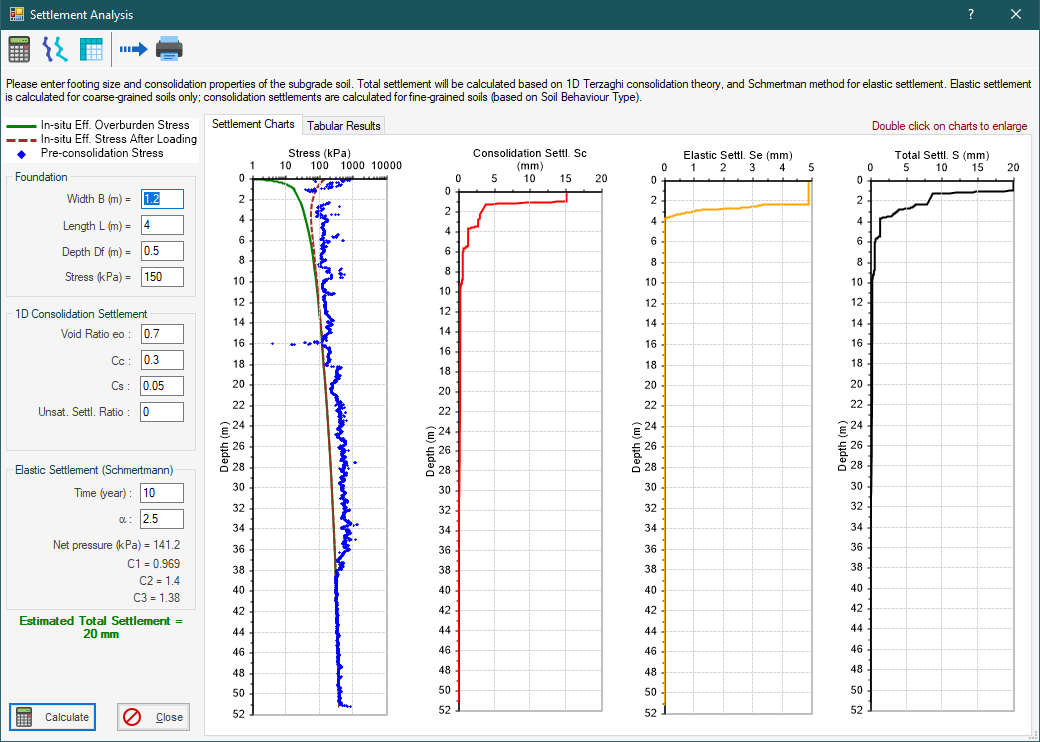Settlement Analysis Tool
This tool is designed to analyze the elastic and consolidation settlement of shallow footings based on CPT data. The elastic (immediate) settlement is calculated based on the methodology proposed by Schmertmann; The consolidation settlement is based on Terzaghi's one-dimensional consolidation theory.

Enter footing size and consolidation properties of the subsurface soil within 1.5xB below the underside of the footing. For Schmertmann method, time for long-term settlement as well as α should be specified, where α is defined as the ratio of modulus of elasticity (Es) to cone resistance (qc) at each depth. When all required data is entered, press the Calculate button.
Calculation details is presented in the Tabular Results tab, and settlements are plotted on charts. Columns of the table presented in the Tabular Results tab are described below:
qc : Cone tip resistance as it is read during the test
Iz : Schmertmann influence factor
OCR : Over-consolidation ratio
e : Void ratio
Cc : Coefficient of compression for consolidation settlement
Cs : Coefficient of re-compression for consolidation settlement
Pc : Pre-consolidation stress
Sv : Total overburden stress (σv)
S'v : Effective overburden stress (σ'v)
dp : Stress increase at each depth, due to the applied load on the subject footing
dSc : Consolidation settlement at an element of soil with thickness of dz
dSe : Elastic settlement at an element of soil with thickness of dz
Sc : Accumulative consolidation settlement at each depth
Se : Accumulative elastic settlement at each depth
S : Accumulative total settlement at each depth (i.e. S=Se+Sc)
Other parameters:
Unsaturated Settlement Ratio : If you wish to calculate the unsaturated consolidation settlement above the groundwater level, choose a value other than zero for this field. NovoCPT will multiply this factor by total calculated consolidation settlement above the groundwater level.
Time : This is the time in elastic settlement calculation to account for creep.
α : Is used for estimation of soil modulus of elasticity based on cone tip resistance E=α.qc
![]() Schmertmann (1970) suggested that a value of α=2 should be applied for normally consolidated, un-aged and un-cemented predominantly quartz sands; This is based on a load increment from 100 to 300 kPa. It is probable that somewhat higher α values may be appropriate for loose sands and somewhat lower values for very dense sands.
Schmertmann (1970) suggested that a value of α=2 should be applied for normally consolidated, un-aged and un-cemented predominantly quartz sands; This is based on a load increment from 100 to 300 kPa. It is probable that somewhat higher α values may be appropriate for loose sands and somewhat lower values for very dense sands.